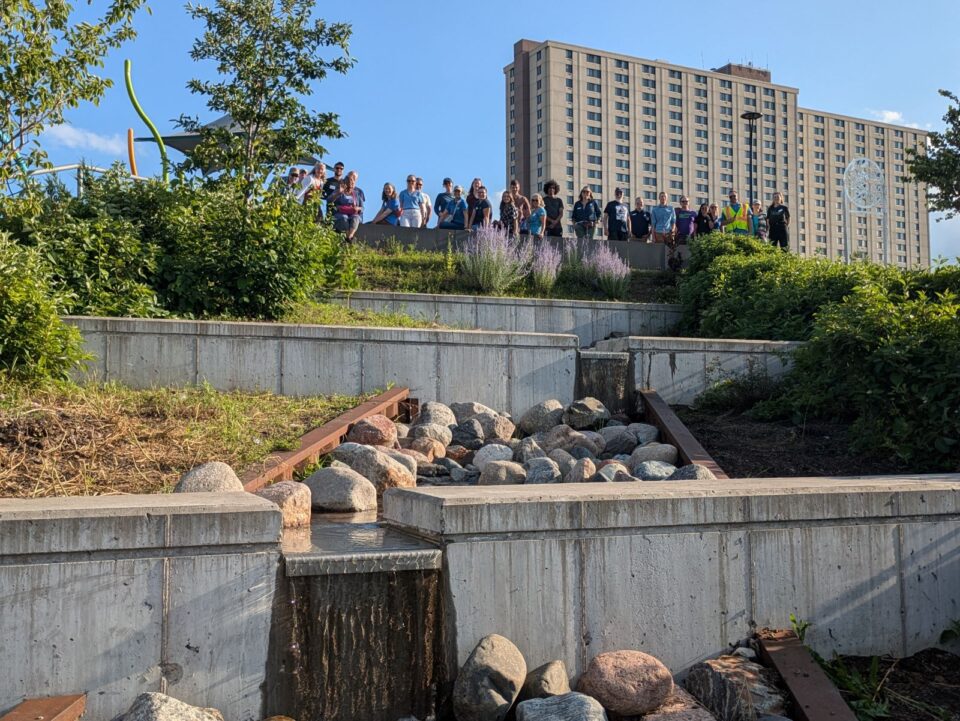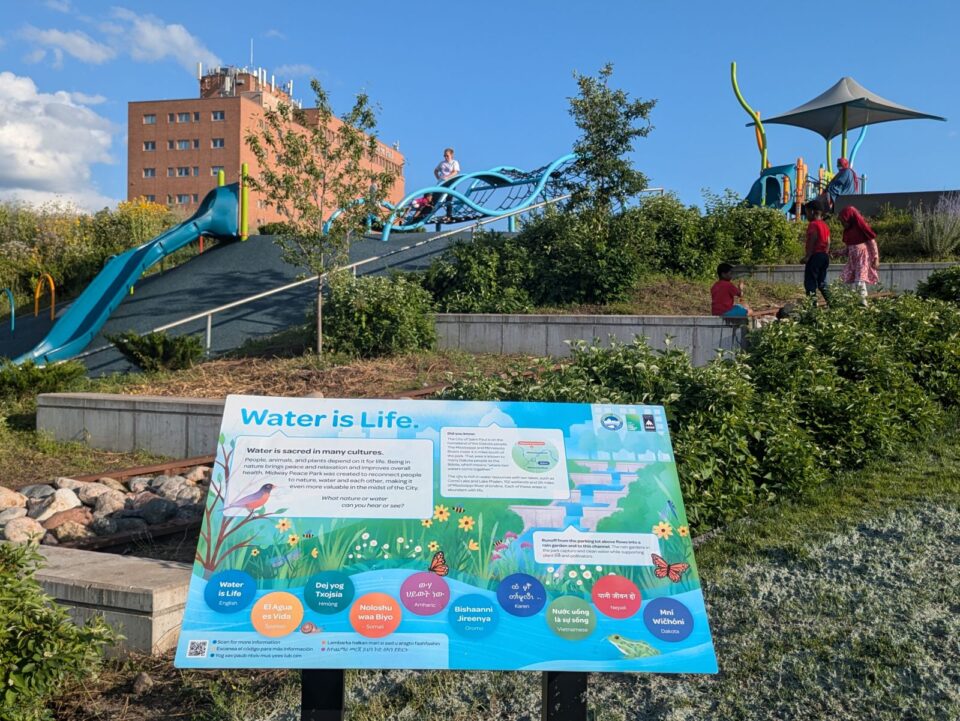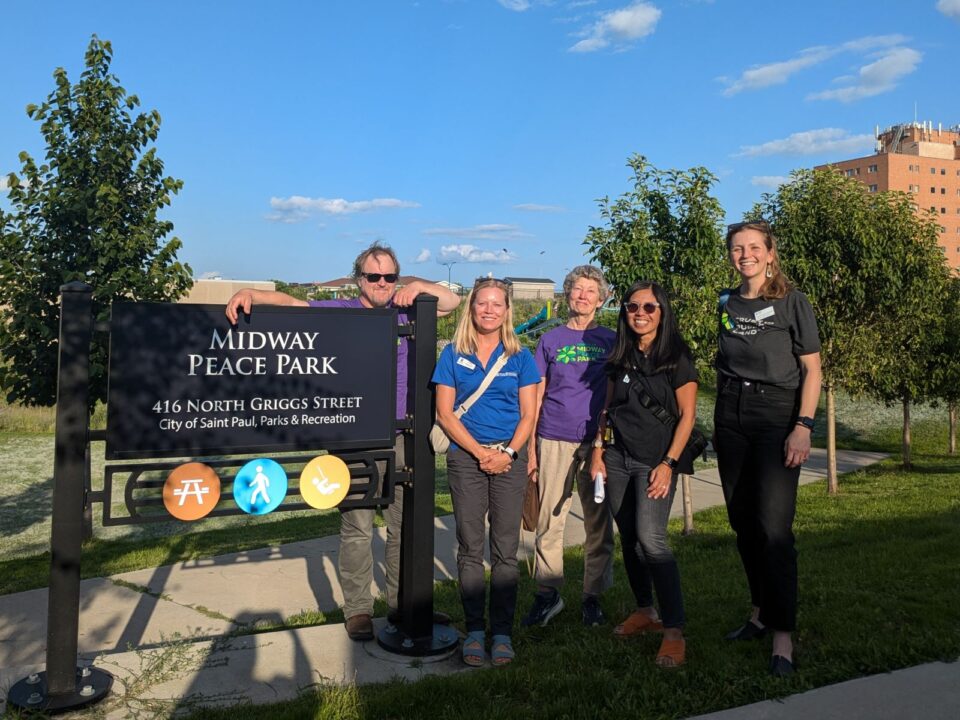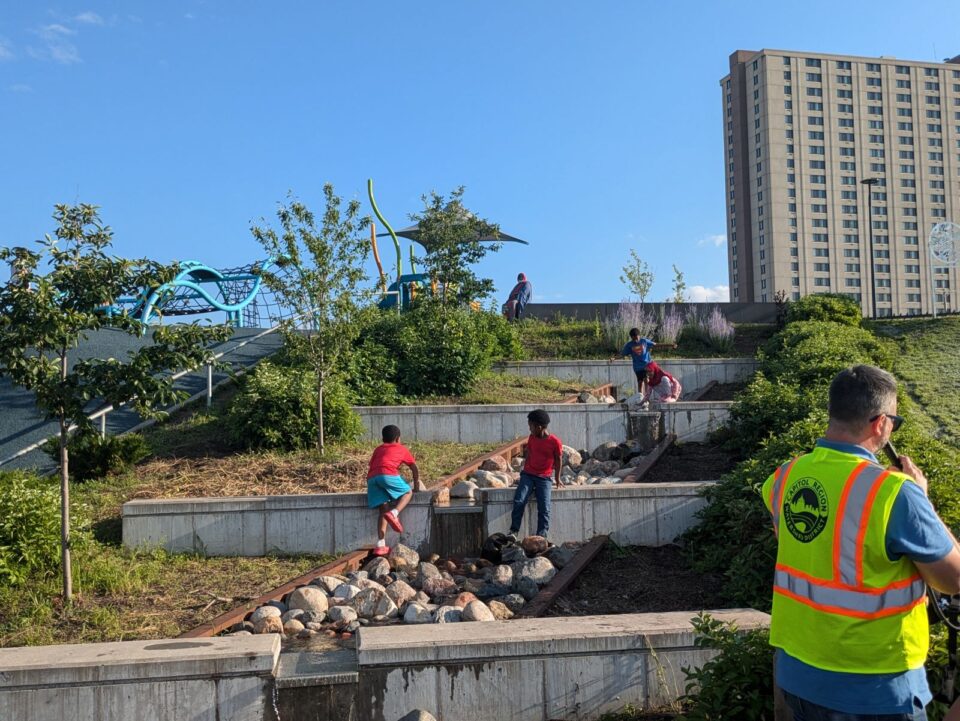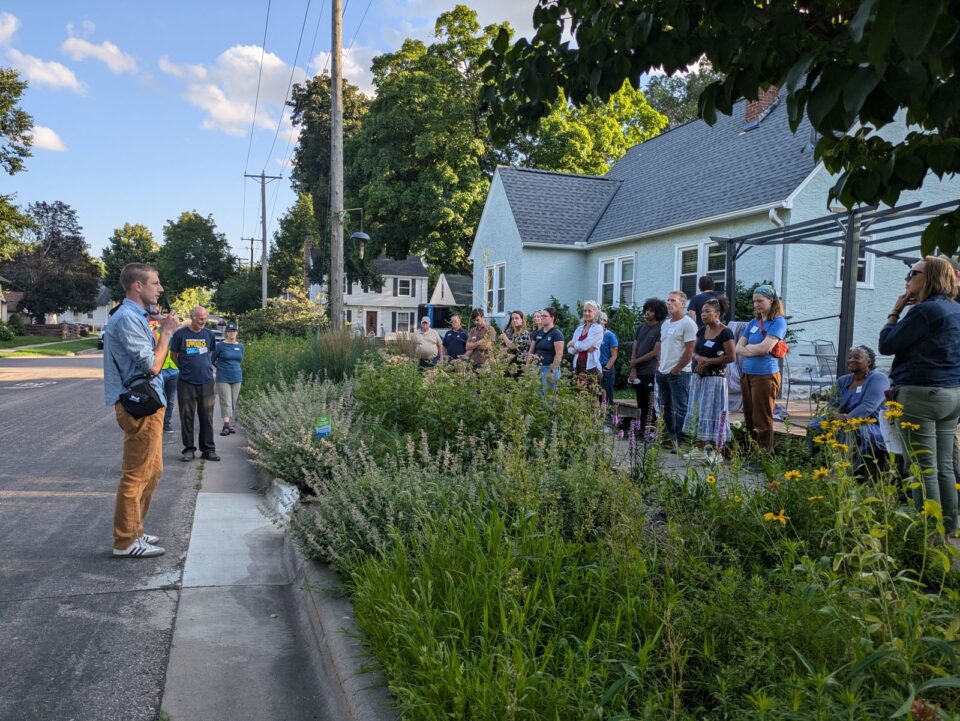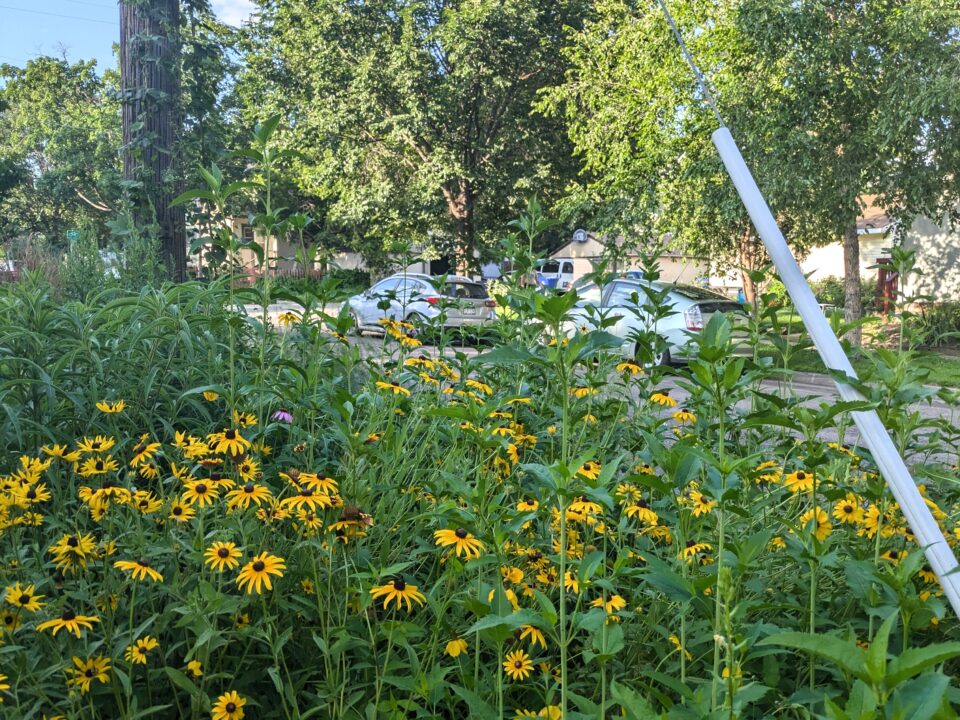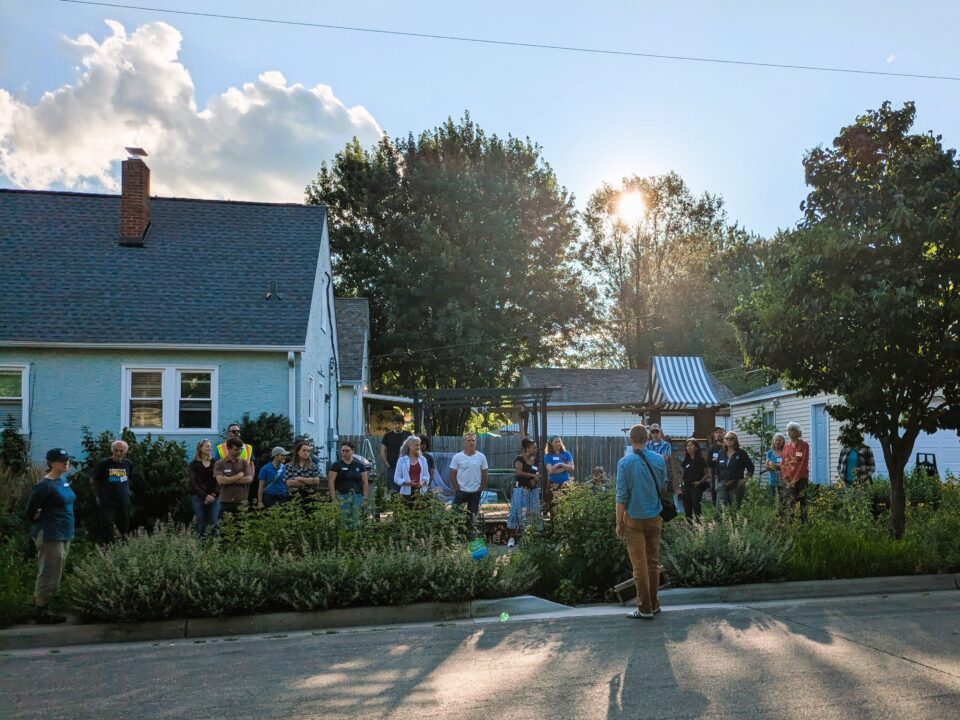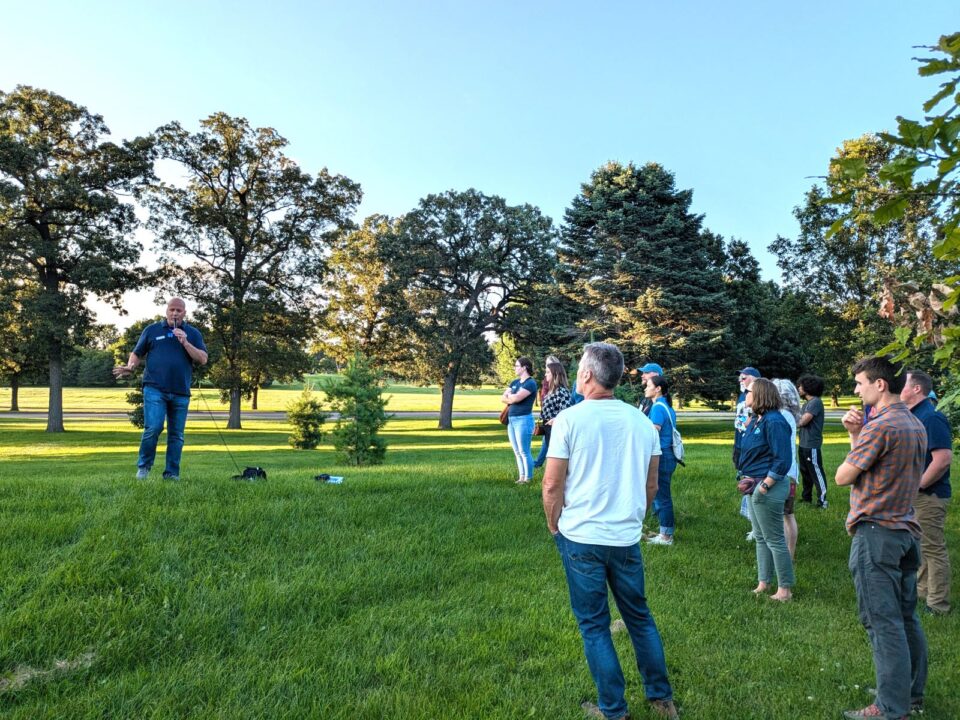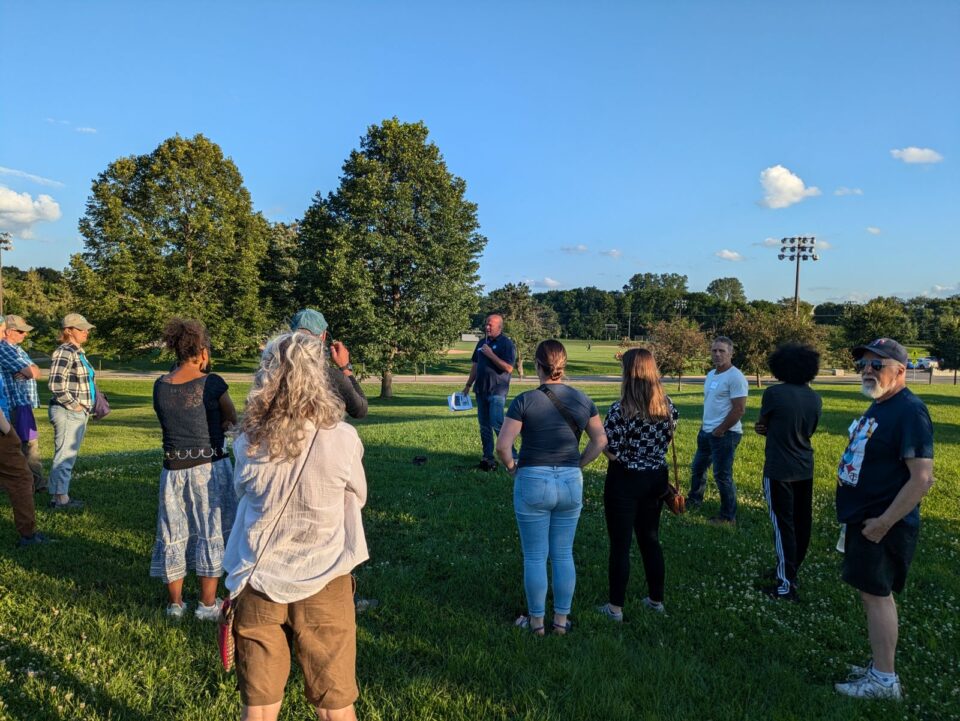Tour of Clean Water Projects
Capitol Region Watershed District (CRWD) hosts a tour each summer for our Community Advisory Committee (CAC). Members from the Board and CAC join staff and CRWD’s Water Stewards to tour select projects. This year’s tour, on July 17, visited Saint Paul’s Midway Peace Park, a boulevard rain garden in the Midway neighborhood, and McMurray Field, a future clean water project site.
The CAC aids the Board of Managers with organizational development, planning processes, and program implementation. The CAC strengthens the connections between CRWD and residents of our watershed. Committee meetings are held on the second Wednesday of each month and are open to the public.
We encourage all interested residents to learn more about the CAC and consider becoming members. To learn more, view the recruitment flyer PDF and CAC Application PDF.
Midway Peace Park
At the first tour stop, families are enjoying the water feature and playground. Forrest Kelley, Facility Management Division Manager, and Anna Eleria, Administrator, discussed the project. Anne Gardner, Lead Landscape Architect with City of Saint Paul Parks and Recreation; Sophie Vorhoff, MN State Director with Trust for Public Land; Paul Creager, Friends of Midway Peace Park and Gordon Parks High School Teacher, and Jenny Keyser, Friends of Midway Peace Park, shared insights on the planning process and grassroots efforts to create the park. Many tourgoers took the opportunity to test out the playground’s slide.
The City of Saint Paul, in partnership with Trust for Public Land, Friends of Midway Peace Park, CRWD, and many other partners, converted underutilized land near University Avenue into a vibrant community greenspace, Midway Peace Park. The park in a once-empty lot is now a destination along the Green Line and an important local park for the neighborhood, area schools, and residents of the adjacent Skyline Tower.
The three-acre park includes:
- A large field.
- Walking paths.
- Full-court basketball.
- Multi-level playground.
- Large rain gardens.
- A signature stormwater feature.
The rain gardens have native plants that absorb stormwater runoff from the park and adjacent parking lot, allowing it to soak into the ground. Native plants also provide habitat for pollinators and wildlife. The unique stormwater channel next to the playground and lower walking path re-circulates pretreated stormwater from the upper rain garden. CRWD funded the stormwater channel and accompanying interpretive signage to raise awareness about stormwater and highlight it as a resource. Clean water projects at the park collect and filter 1.5 million gallons of runoff each year to prevent pollution from reaching the Mississippi River.
Boulevard Rain Gardens
The tour visited the boulevard curb-cut rain garden at the home of Johnathan Frost in Saint Paul’s Midway neighborhood. Chris Kucek, Projects and Grants Specialist spoke about the curb-cut rain gardens CRWD has installed around the district. Homeowner Jonathan offered their experience with the grant process and the garden’s successes.
CRWD has been working with residents since 2005 to reduce polluted street runoff by building curb-cut rain gardens with homeowners, businesses, schools, and community organizations. Since 2005, CRWD has constructed over 330 curb-cut rain gardens that collect a combined 21.8 million gallons of stormwater each year. Curb-cut rain gardens soak up street runoff and help reduce local flooding while improving water quality in nearby lakes and providing pollinator habitat.
In a curb-cut rain garden, a carefully placed break in the curb diverts the water when it rains from the street into a beautiful garden filled with native plants. The roots of the native plants and soil microbes help break down pollutants in the water while it seeps deeper into the ground. You can apply for a curb-cut rain garden through our Clean Water Project Grants.
McMurray Field
The tour’s final stop is the site of a future stormwater treatment project to protect Como Lake. The City of Saint Paul and CRWD identified the McMurray Field complex within Como Regional Park as a potential location to divert stormwater from the sewer system to a water quality improvement project. Approximately 130 acres of highly developed land drain to McMurray Field before reaching Como Lake.
The tour gathered at the corner of the athletic fields along Lexington Avenue as Deputy Administrator Bob Fossum explained the plans to install a stormwater treatment system. CRWD and the City of Saint Paul are partnering to design a combination of stormwater treatment methods, including rain gardens in the parkland surrounding McMurray Field and a reuse system for irrigation of green spaces. This unique approach will reduce potable water use, improve the condition of park greenspaces, provide pollinator habitat, and protect Como Lake. CRWD was awarded a $950,000 Clean Water Fund grant through the Clean Water, Land, and Legacy Amendment to support the construction of the multimillion-dollar project.
What You Can Do
As this tour shows, CRWD constructs a wide variety of projects to improve water quality. We also rely on neighbors like you to help protect our lakes and the Mississippi River. Here are some actions you can take at home.
Clean your curb: Storm drains carry polluted runoff from your street to nearby lakes and rivers. Keep leaves and grass out of streets and gutters.
Adopt a drain: Consider volunteering to adopt a storm drain near you and spending 15 minutes twice a month keeping it clean.
Scoop the poop: Put pet waste in the trash; rain and snowmelt can carry harmful bacteria to lakes and rivers, using up oxygen that fish and wildlife need to survive.
Sweep the salt: Remove snow and ice from driveways and sidewalks before salting; use sand when it’s below 15 degrees Fahrenheit and sweep up extra salt and sand.
Go native: Landscape with native plants, grasses, and trees to filter stormwater runoff before it reaches nearby lakes and rivers.

